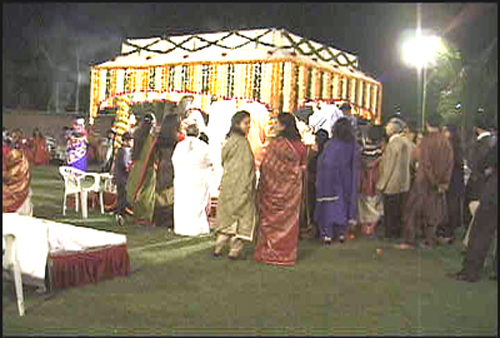PARTITION

PARTITION

|
|
On September 13, 1947, a twelve-year-old boy awoke to find his homeland in turmoil and his life in peril. By the end of that day, he and his family had fought their way through riots and killing fields to become some of the estimated 10 million refugees fleeing into and out of the newly formed nation of Pakistan. For two and a half months, the fighting continued as a mass migration along religious lines lead Sikhs and Hindus to travel into India and Muslims into Pakistan. When it was over, one million were dead. Partition, a half-hour documentary narrated in the first person, tells the story of how a moment in history- the partitioning of India and Pakistan on August 15, 1947- divided a nation in two, split a family first as refugees and later as immigrants, and created a cultural partition between generations of one family. Focusing on the filmmaker's family- the Chhabria's- the film tells how partition changed not just the generation that became refugees, but also has tangible effects on younger generations. The first act of Partition explores the actual history of partition as told in first person by the filmmaker's father, Sirchand "John" Chabria, and looks at his decision to leave India and come to America. Act two examines the marriage of 25-year-old Shashi Chhabria to a man of a different cultural and caste distinction, and how the family is reacting to this, and how partition made it possible for her to have such a choice. Act three looks to future generations of Chhabrias, to see how the loss of a homeland affects cultural identity two generations later, and what it means for these children to be Indian, much less Sindhi. OPENING: Morning in the port of Mumbai, formerly called Bombay. Heavy smog hangs low in the sky, causing the sun to ricochet in a fiery display as it rises over the water. The chaos that is India has already begun for the day. Ox carts meander among throngs of three wheeled taxis. Women in bright saris worn thread bare with age wash clothes at crumbling stone steps that lead to the water. Cargo boats fill the dingy bay and the roar of a city that will be the largest on earth by 2020 fills the background. The filmmaker begins the narration by explaining that it is here that she imagines her father arriving as a twelve-year-old refugee from Pakistan. The scene switches to focus on a dusty dirt lane packed with cars and people. The narration says she images her father traveling from Bombay to Ahmadabad along these roads, after surviving the massacre of a million people and the separation of his family. She says she wants to believe she understands what this loss meant to him, but this is not her world. The scene shifts to the streets of her childhood in Columbus, Ohio, where big green lawns and Dairy Queens were the norm. She explains that this is where she is from, although the color of her skin always made her an outsider. The scene switches to the house in Ahmadabad where her father finally settled after living in refugee camps. Many of his family, including younger generations, still live here. The narration explains that even the filmmaker's cousins, raised in this house in India, are divided from their elders by not having experienced Partition for themselves, and by having been raised in a place where they too were cultural outsiders.
|